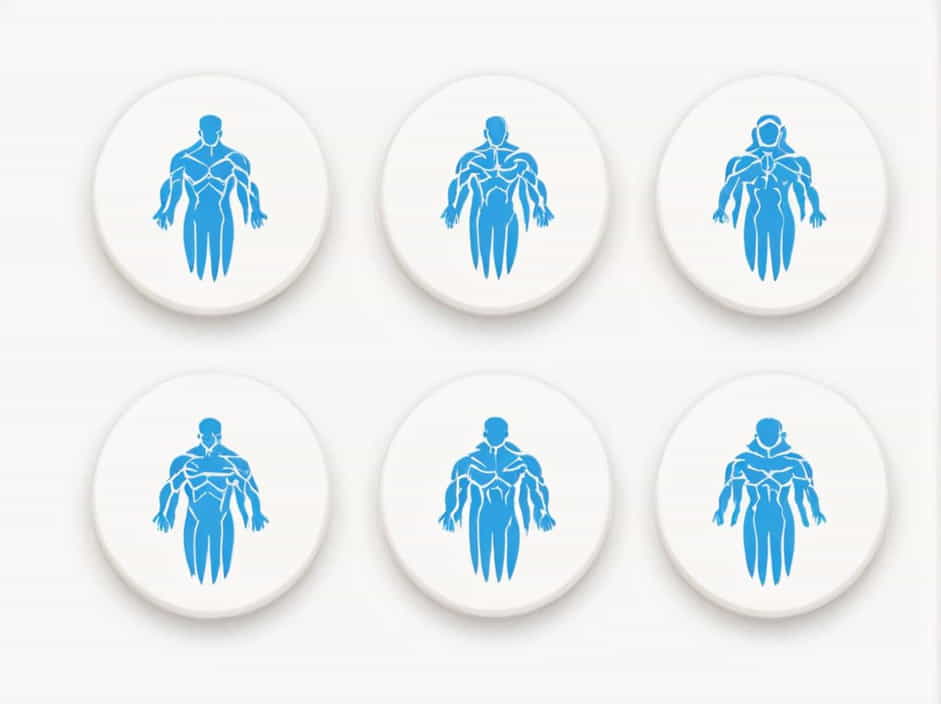Shrugging the shoulders is a common motion used in everyday activities, exercises, and body language. Whether expressing indifference, lifting objects, or engaging in strength training, the movement involves specific muscles and biomechanics.
Understanding which muscles and motions are responsible for shoulder shrugging can help in improving posture, preventing injuries, and enhancing muscle strength. In this topic, we will explore the primary muscles involved, the movement mechanics, and exercises to strengthen them.
The Primary Muscle Responsible for Shoulder Shrugging
1. The Trapezius Muscle
The main muscle responsible for shrugging the shoulders is the trapezius. This large, triangular-shaped muscle extends from the base of the skull, down the neck, and across the upper back.
The trapezius is divided into three parts:
- Upper trapezius – The primary muscle involved in shrugging.
- Middle trapezius – Assists in pulling the shoulders back.
- Lower trapezius – Helps in shoulder depression and stabilization.
When the upper trapezius contracts, it elevates the scapula (shoulder blade), leading to the shrugging motion.
Other Muscles Involved in Shoulder Shrugging
1. Levator Scapulae
- Located along the side of the neck.
- Assists in lifting the scapula during shrugging.
- Works closely with the upper trapezius for smooth movement.
2. Sternocleidomastoid (SCM)
- Found in the front and side of the neck.
- Helps in tilting the head during shoulder elevation.
- Engages when shrugging with excessive head movement.
3. Rhomboid Muscles
- Located between the shoulder blades and spine.
- Helps stabilize the scapula during shrugging.
- Assists in maintaining proper posture.
These muscles work together to ensure the shoulders move efficiently without strain or imbalance.
The Motion of Shoulder Shrugging
1. Elevation of the Scapula
- The main movement during shrugging.
- The trapezius and levator scapulae lift the scapula upward.
- Common in gestures, weightlifting, and carrying heavy objects.
2. Retraction and Depression (Lowering the Shrug)
- After shrugging, the scapula returns to its resting position.
- The middle and lower trapezius help in this movement.
- Engaging the muscles properly prevents tension buildup in the neck and shoulders.
Common Uses of Shoulder Shrugging in Daily Life
1. Nonverbal Communication
- A shrug is often used to express uncertainty, indifference, or confusion.
- It is a universal body language gesture seen across different cultures.
2. Strength Training and Exercises
- Shrugging movements are common in resistance training exercises like shoulder shrugs with dumbbells.
- Helps in strengthening the upper back and neck muscles.
3. Carrying Heavy Objects
- When lifting objects like grocery bags, backpacks, or weights, the trapezius and levator scapulae activate to support the load.
Exercises to Strengthen Shoulder Shrugging Muscles
1. Dumbbell Shrugs
- Hold a dumbbell in each hand with arms at your sides.
- Raise your shoulders as high as possible, then slowly lower them.
- Perform 3 sets of 10-15 repetitions.
2. Barbell Shrugs
- Hold a barbell with both hands in front of your thighs.
- Lift your shoulders towards your ears and slowly return to the starting position.
- Strengthens the upper trapezius.
3. Resistance Band Shrugs
- Stand on a resistance band with feet shoulder-width apart.
- Pull the band upward by shrugging your shoulders.
- Helps improve muscle endurance and mobility.
4. Neck and Shoulder Stretches
- Gently tilt your head side to side to relieve tension.
- Roll your shoulders forward and backward to loosen stiff muscles.
- Perform daily to maintain flexibility and prevent stiffness.
Common Problems Associated With Shoulder Shrugging
1. Shoulder Tension and Stiffness
- Excessive shrugging due to stress or poor posture can cause tension.
- Regular stretching and massage can help release tightness.
2. Muscle Imbalances
- Overuse of the upper trapezius without strengthening the lower trapezius can lead to imbalance.
- Combining shrugs with posture exercises ensures balanced muscle development.
3. Neck Pain and Headaches
- Holding the shoulders in a shrugged position for long periods can lead to chronic neck pain.
- Adjusting posture and ergonomics at work can help reduce discomfort.
How to Improve Shoulder Mobility and Posture
1. Maintain a Neutral Shoulder Position
- Avoid excessive shrugging while sitting or working.
- Keep shoulders relaxed and aligned with the spine.
2. Strengthen Supporting Muscles
- Incorporate exercises for the middle and lower trapezius.
- Improve overall shoulder stability and posture.
3. Use Proper Ergonomics
- Adjust desk height and chair support to maintain natural shoulder alignment.
- Take breaks to prevent prolonged shoulder elevation.
Shrugging the shoulders is a simple yet essential movement that involves the trapezius, levator scapulae, and other supporting muscles. Understanding the biomechanics and muscle engagement behind this motion can help in strengthening muscles, improving posture, and preventing tension-related issues.
By incorporating exercises, stretching, and proper posture habits, you can keep your shoulders healthy, strong, and free from pain.
